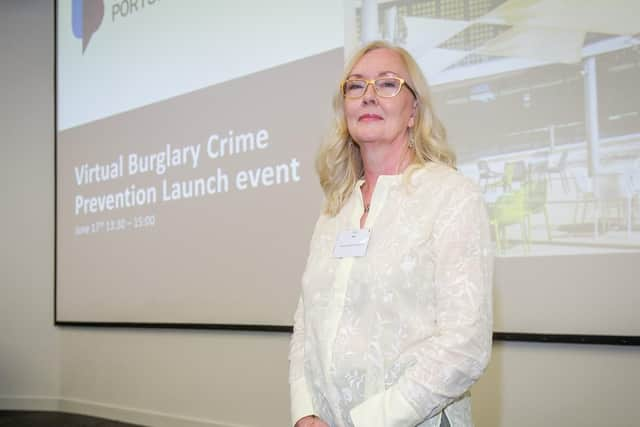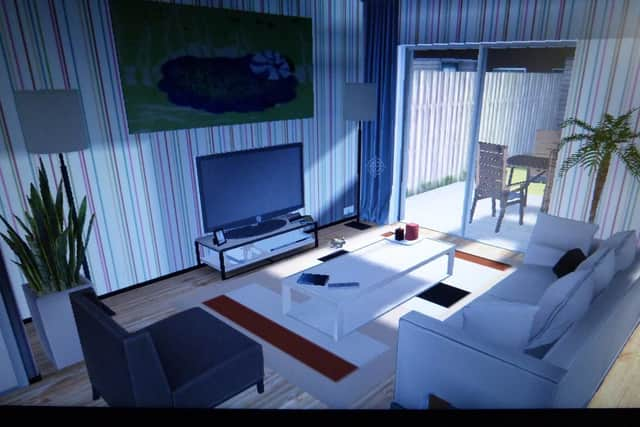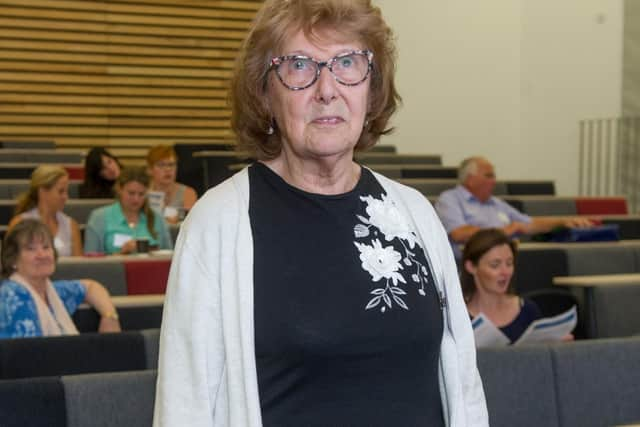University of Portsmouth research gets inside burglars' minds using virtual reality to tackle crime


More than 100 criminals including 56 convicted burglars were placed in a virtual reality neighbourhood where their decisions and patterns of behaviour were analysed by criminal experts.
Forensic psychologist, Dr Claire Nee, who led the research, said: ‘We decided to develop a virtual reality environment to help us understand burglars. The street scene and scenarios were designed based on decades of research. I have been studying crime for 30 years and in the past it was a case of interviewing criminals, showing them scenarios and questioning them about their decisions. This new virtual reality technology allows us to assess burglars behaviour in the immediacy of making decisions in real life scenarios.’
Advertisement
Hide AdAdvertisement
Hide AdThe burglars and other participants were placed in virtual reality street consisting of five terraced houses. They then had to choose which house to target, enter the house and locate potential items before deciding where to best to exit the property.


‘The VR scenario was designed to incorporate the three phases of burglary. The first is scoping out the area to select a target, the second is to decide how and where to enter the property and the third is to carry out the actual burglary,’ said Dr Nee.
During their time on the street each participant was encouraged to think aloud, telling researchers what was going through their minds during each stage of the burglary. The VR burglars could stay in the house for as long as they wanted and select as many items as they liked.
One of the convicted burglars who took part in the study, said: ‘You look at what people live in, what people are driving, and you can work out what they may own, what money they might have, what jewellery, whatever it might be, you can pretty much picture it in your head what could be inside a building, inside a garage, inside a cupboard.’
Advertisement
Hide AdAdvertisement
Hide AdThe results of the study, which also included 55 non-criminals, supported this process of perceptive calculation and decision-making carried out by the burglars when compared to the other groups.


Three-quarters of burglars targeted the end of terrace house, choosing the back door to enter, while less than half of the other two groups chose this house, with the majority also entering through the front door.
On average the burglars spent about nine minutes inside the property and their immediate instinct was to head to the rooms upstairs.
The decisions of the ‘non-experts’ was found to be more chaotic with no clear pattern of behaviour.
Advertisement
Hide AdAdvertisement
Hide AdOne of the key differences was also in the type of items targeted by the burglars.


Dr Nee said: ‘The burglars spent on average nine minutes in a property and targeted light weight, high value portable items. The non burglars would tend to focus on the downstairs room where they would pile up large bulky items such as TVs and PCs.’
The burglars were far more efficient in locating expensive goods with twice as many likely to find the three highest value items – a ring, passport and necklace hidden in a jewellery box in a filing cabinet in the study.
One of the burglars taking part said: ‘A jewellery box can have more money than an entire house. The first thing a burglar does is go upstairs and look for gold. You want look for small items, expensive items.’
Advertisement
Hide AdAdvertisement
Hide AdObservations showed that burglars were more selective and shunned the basic iPad preferring the upmarket version.


Dr Nee said: ‘For burglars it seems to be second nature to be aware how long they could spend in a house before any hidden alarms would bring police, and which rooms and areas in the house had the highest value, easiest to carry and easiest to sell items.’
Virtual Burglary Crime Prevention Launch
The findings of the study were revealed at the university’s Virtual Burglary Crime Prevention Launch which included representatives from the Hampshire Police, Portsmouth Neighbourhood Watch and some of the UK’s leading insurance companies.
Dr Nee hopes hopes the findings can help both the public and authorities to be better prepared in the fight against crime.
Advertisement
Hide AdAdvertisement
Hide Ad‘Law-abiding people are notoriously poor at understanding burglary risk and the opportunities they leave for crime inside and outside their homes. We very much hope research like this helps them get inside the burglar’s head, giving them much more chance of protecting their property,’ she said.
Researchers have used the insight provided to create an informative video to help residents of Hampshire better protect their property.
Dr Nee commented: ‘The two biggest fears burglars have is being seen and meeting their victims. Anything house owners can do to fake occupancy will be an effective deterrent. Ninety per cent of burglars said they would leave if they believed someone was in. This can be having lights and radios on timers or if you are on holiday asking someone you know to visit your property. In addition to alarms, security lights, particularly at rear entrances, will make burglars more visible as will automatic sensor lights in your home,’ added Dr Nee.
The findings of criminal behaviour found on the VR street certainly appear to replicate those found in real life neighbourhoods.
Advertisement
Hide AdAdvertisement
Hide AdPC Nick Jackson, representing Hampshire Police, said: ‘The use of VR to tackle burglary certainly sounds like a good idea and the findings certainly ring true with what we have experienced in real life. The study seems to be very well researched and the more information we can get on criminal patterns of behaviour the better.’
Colleague, PC Charlotte Pocock, added: ‘No one knows better than the burglar as to the rationale behind why they make the decisions they do.’
President of Hampshire County Neighbourhood Watch Association, Margaret Filley, believes the research will prove invaluable in helping to inform the public how best to protect their property.
Mrs Filley, who joined Neighbourhood Watch after being burgled before Christmas, said: ‘We have already used the findings from the study to update the advice we provide to our members as part of our Home Security Challenge. It’s important to raise public awareness of crime and to make everyone realise that they have a responsibility to help reduce it.’
Advertisement
Hide AdAdvertisement
Hide AdDr Nee hopes the use of Virtual Reality technology can be used in the future to help increase awareness of the risk factors for other types of crime and the measures which can be put in place to mitigate them.
‘While this study has focused on burglary we hope to apply the technology of virtual reality to study other crimes such as murders, carjackings and muggings,’ she said.
However PC Jackson is more cautious about this application.
PC Jackson said: ‘I think this works very well with burglary where there are a lot of decisions to be made. However from my experience many other types of crime tend to be more spontaneous.’
Sleep Easy
Dr Nee also wanted to use the research to reassure the public that, while upsetting, in most instances of burglary the perpetrator does not intend to inflict any physical harm on the victim.
Advertisement
Hide AdAdvertisement
Hide Ad‘The vast majority of burglars are just as fearful of meeting their victim which is why less than one per cent ever do. The majority of burglars who took part in the study were remorseful. In the street scenario whenever they entered into a child’s bedroom they immediately shut the door and left - which is an interesting insight into their mentality,’ she explained.